When travelling to China, the Terracotta Warriors are a must-visit tourist attraction. We provide you with China travel information, China travel guide to make your tour more enjoyable and smooth.
1. Historical background
The Terracotta Army is part of the tomb of Qin Shi Huang. Qin Shi Huang was the first emperor in Chinese history, and after he unified China in 221 B.C., he began to build his own tomb. The project took 39 years and used about 700,000 craftsmen. The Terracotta Warriors were built to protect Qin Shi Huang’s ‘underground army’ after his death, replacing the ancient cruel system of living martyrs.
In March 1974, a farmer digging a well in Lintong, Shaanxi Province, accidentally discovered fragments of terracotta warriors, and archaeologists subsequently shocked the world by unearthing three large terracotta warrior pits. 1987, the Terracotta Warriors, along with the Mausoleum of the First Emperor of Qin, were listed by UNESCO as a World Cultural Heritage Site, and have been dubbed the ‘Eighth Wonder of the World’.
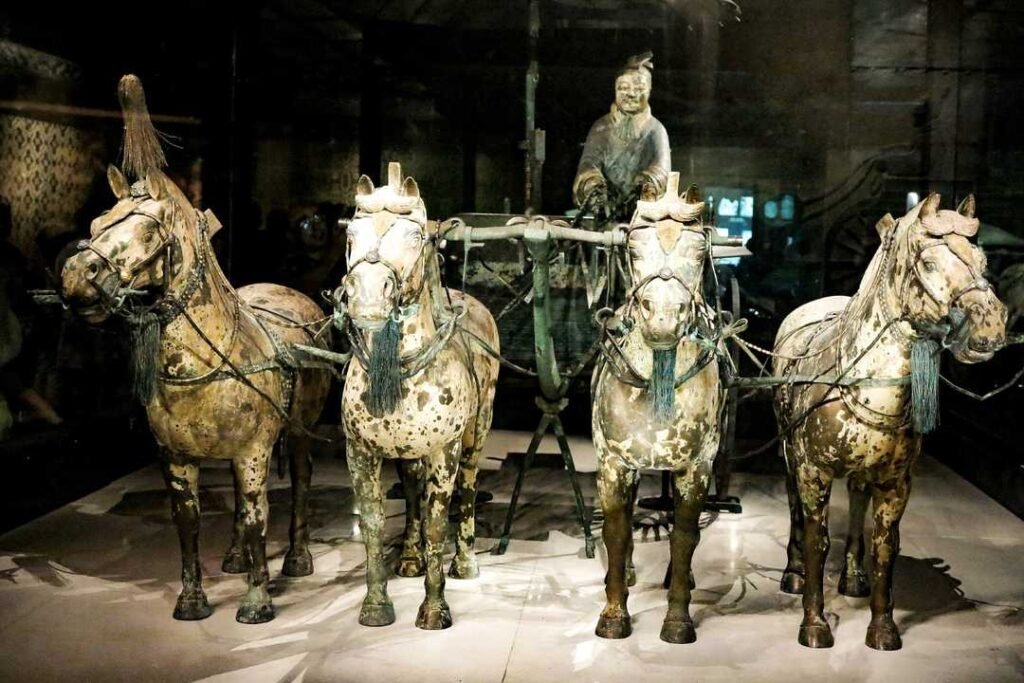
2. Geographical location
The Terracotta Warriors and Horses are located in Lintong District, Xi’an City, Shaanxi Province, about 35 kilometres away from the centre of Xi’an City, with the specific address of Qinling Road. The scenic spot has a backdrop of Mount Li and faces the Wei River, and is close to the main tomb of Qin Shi Huang’s mausoleum (about 1.5 kilometres) and the Huaqing Pond scenic spot. There are also attractions in the neighbourhood, such as the Lishan Cableway and the Song of Eternal Hatred live performance, forming a tourist route that combines history and nature.
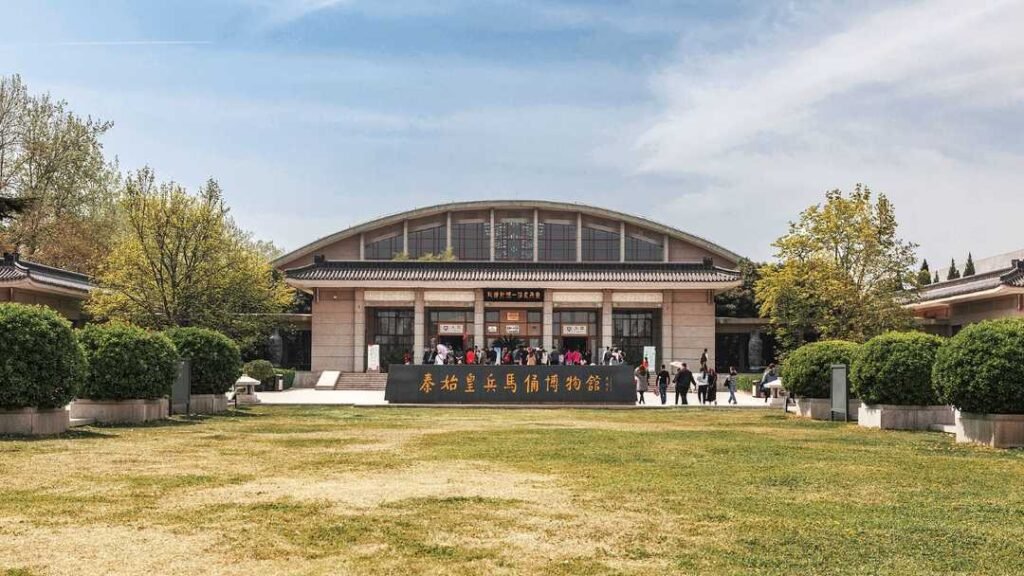
3. Mode of Transportation
From Xi’an city centre
- Metro + Bus:
- Take metro line 9 to the terminal station ‘Qinling West’, change to bus 617 and go to Terracotta Warriors and Horses Museum, the whole journey takes about 1.5 hours.
- Bus:
- You 5 (No. 306): from the East Square of Xi’an Railway Station, the fare is RMB 5, and the terminus is Terracotta Warriors and Horses.
- Route 307: departs from Weaving City Bus Terminal, passing by Huaqing Pond, with the Terracotta Warriors as the final stop.
- Self-drive:
- Take the G30 Lianhuo Expressway to ‘Lintong’ or ‘Xinfeng’ toll station, and follow the navigation for about 40 minutes. The car park charge is RMB 10-25 per day.
Transportation within the scenic area
- Walking: The three Terracotta Warriors and Horses pits, the Bronze Chariot and Horses Exhibition Hall and other core attractions are concentrated and can be visited on foot.
- Battery car: the scenic spot provides battery car service (RMB 10 one-way), connecting the more distant cultural relics exhibition halls.
4. Attractions (Highlights)
① Terra-cotta Warriors Pits
- Pit No.1
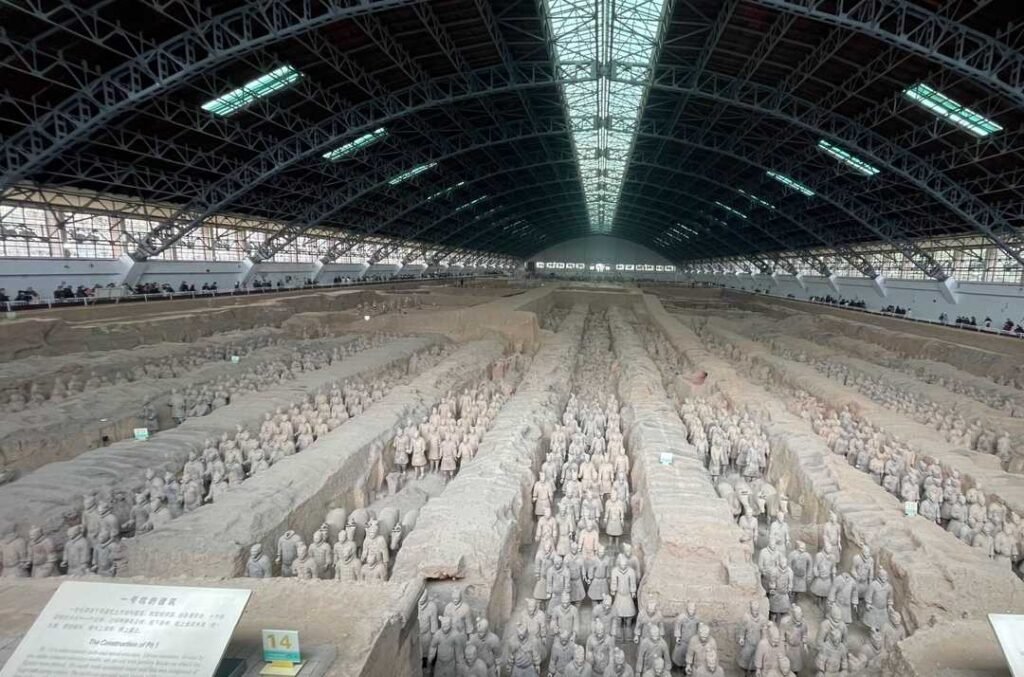
- The largest: 230 metres long, 62 metres wide and 5 metres deep, containing more than 6,000 terracotta figurines, horses and chariots, which are arranged in a neat mixed military formation of infantry and chariots.
- What to see: three columns of vanguard troops on the east side, the main military formation of 38 columns in the rear, and the flanking guards on the north and south sides.
- Pit No.2.
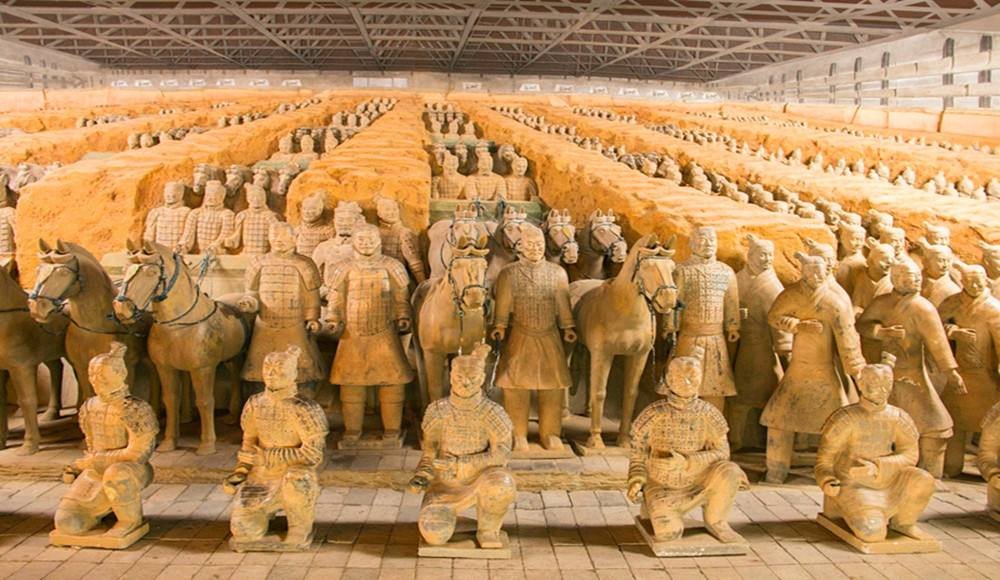
- The most complex tactics: covering an area of 6,000 square metres, it consists of crossbow squares, cavalry squares, chariot squares and mixed squares, demonstrating the diverse tactics of ancient armies.
- Highlights: Kneeling and Shooting Terracotta Warriors, General Terracotta Warriors and Green-faced Terracotta Warriors (the only well-preserved terracotta figurines with painted faces).
- Pit No. 3
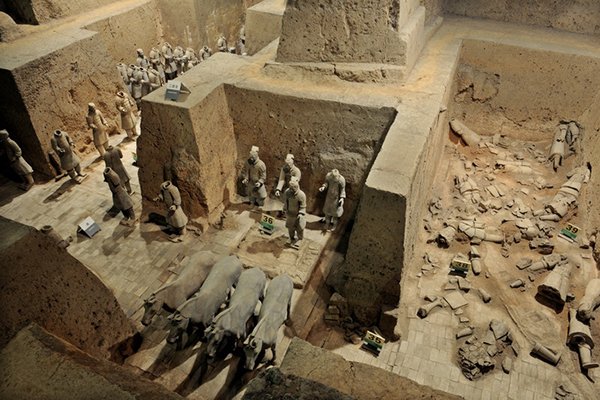
- Command Centre: the smallest area (524 square metres), with 68 terracotta figurines unearthed, including figurines of high-ranking officers and ritual antlers and animal bones, presumed to be the command headquarters of the army.
② Bronze Chariots and Horses Exhibition Hall
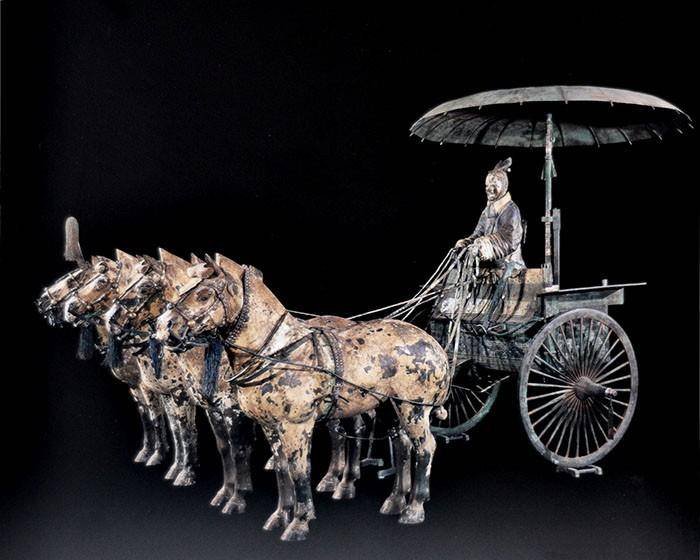
- The treasure of the town hall: two bronze carriages, cast in half the true scale, using 3,400 parts and weighing 1 tonne. The carriages are equipped with gold and silver decorations and colourful patterns, demonstrating the top casting techniques of the Qin Dynasty.
③ Other highlights
- Artifact Restoration Area: at the back of Pit 1, you can observe the process of restoring terracotta figurines by archaeologists through glass.
- Round Screen Cinema: A 20-minute film is shown to restore the construction history of the Terracotta Warriors through 3D animation.
5. Summary of Attractions
Why is it worth visiting?
- World-class cultural heritage: the world’s largest ancient military museum, witnessing the splendour of China’s first unified dynasty.
- Combination of science and art: the average height of terracotta figurines is 1.8 metres, and none of the facial features are repeated; the technology of chrome plating on the surface of bronze weapons is 2000 years earlier than that in Europe.
- Suitable for all visitors: history buffs, family travellers, photographers will all find points of interest, and it is recommended to reserve 3-4 hours for the visit.
Tour Suggestions
- Tickets & Hours:
- Peak season (16 March – 15 November) RMB 150 per person, low season (16 November – 15 March) RMB 120 per person. Opening hours: 08:30-18:00 in high season, 08:30-17:30 in low season.
- Guided tour service:
- Rent an electronic interpreter (RMB 30) or book a manual tour (RMB 100/hour for Chinese, RMB 150/hour for English).
- Note:
- Avoid the peak crowds on National Day (1-7 October) and weekend mornings; wear non-slip shoes, as the ground is slippery in some exhibition areas.
Conclusion.
The Terracotta Warriors is not only a museum, but also a door to the time and space of the Qin Dynasty 2000 years ago. Standing on the viewing platform of Pit 1, looking at thousands of terracotta warriors neatly arrayed, as if you could hear the neighing of war horses and the footsteps of soldiers.
For more China Travel Guide content, please visit our website.





















Comments 1